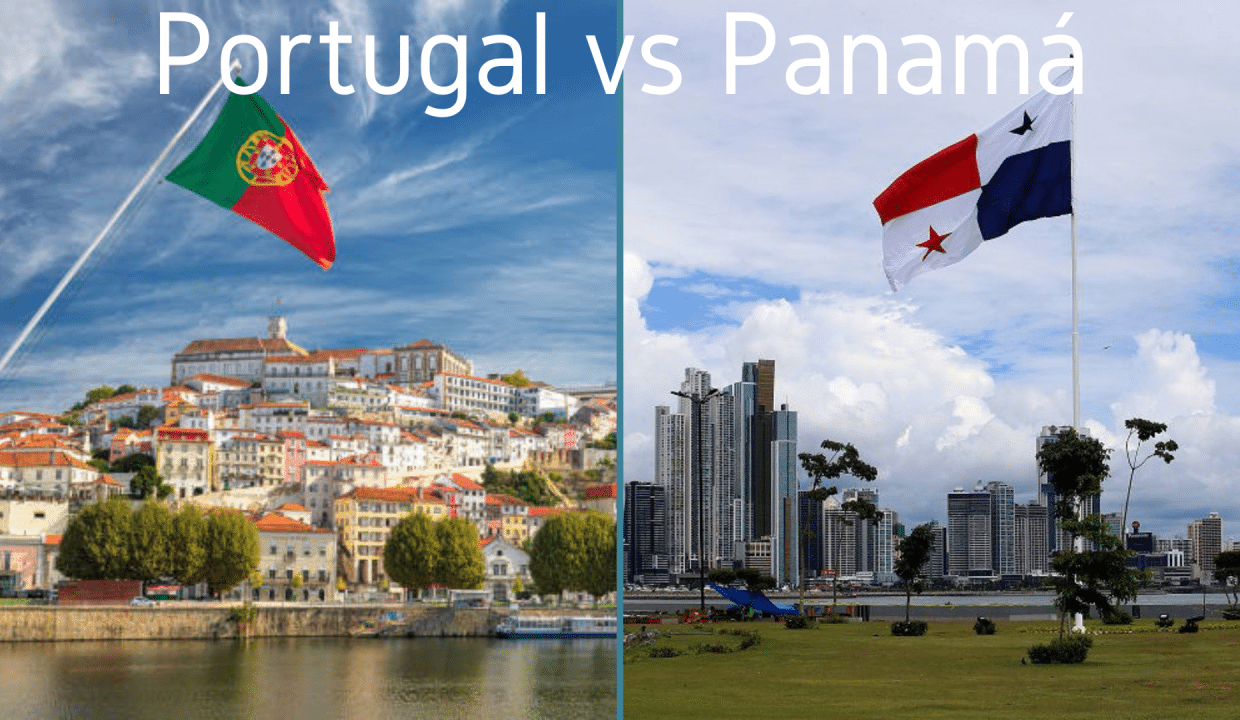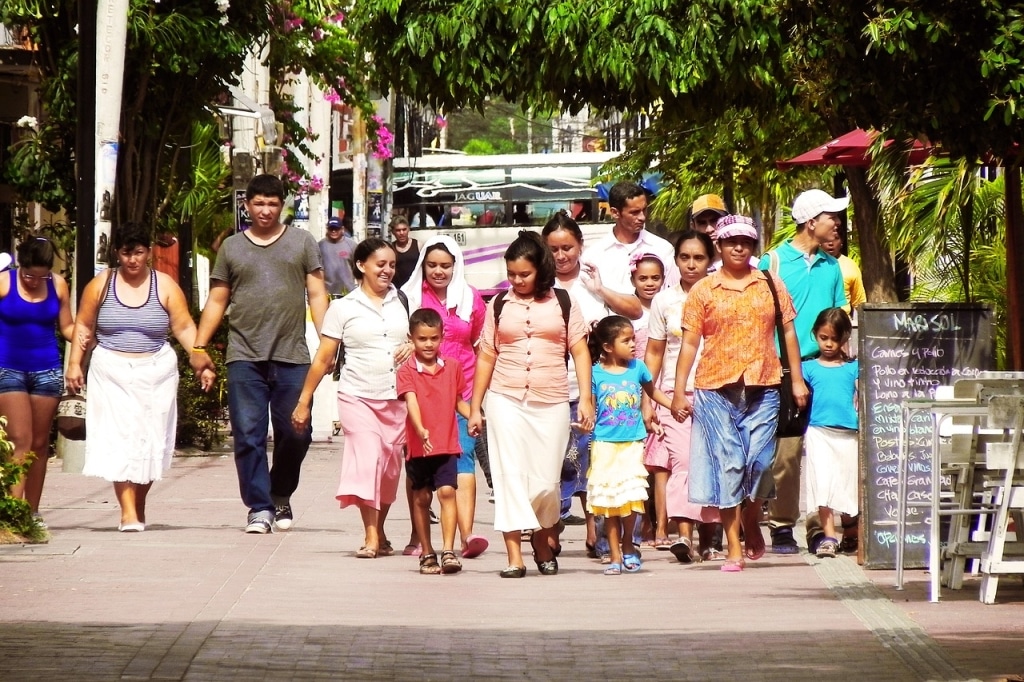
If you are reading this, you are probably knee-deep in your research on becoming an expat and may be considering relocating to Panama vs Portugal. Two great countries by the way! Full of both happy and disappointed expats who have moved to these respective countries from locations around the globe. Some have stayed, some have gone to greener pastures.
My name is Kent Davis, and I run a real estate agency in Panama. So naturally, I am biased because I’ve spent more time in Panama and of course know the ins and outs of the real estate market here.
That said, I was an expat myself back in 2007, and over time have seen many people come to Panama and many people leave Panama.
I’ve been to Portugal. I’ve had clients move to Portugal and also have had clients move from Portugal. I’ve extensively researched through interviews, websites, and 3rd party sources to try and create a fair and unbiased comparison between Panama and Portugal.
The goal of this article is not to try to convince you one way or another but rather serve as a guide to help you frame your own decision around my observations on both countries.
So let’s get started, shall we?
First Things First
If you are at the stage where you’re thinking “I need to get out of _________ (current home country),” congrats! It’s an exciting and possibly intimidating time.
You may want to consider a short list of reasons you are leaving because these will be useful as you begin to compare options.
Here are a few of the most common reasons people leave and become ex-pats, in no particular order
- The Weather
- Politics
- The Economy
- Cost of Living
- Crime/Safety
- Family Considerations
- Need For A Change / Looking For An Adventure
The list, of course, can go on and on but these are a few of the most common ones we see.
And as a heads up if you plan on continuing to read, I’m not going to focus too much on the respective real estate markets in Panama and Portugal because I’ve done that in another article. I will, however, share a brief apples-to-apples comparison between the two a bit later on. You can jump to that section now by clicking here.
The Weather
This one’s easy because it’s less subjective. I.E. you can’t throw in too much “opinion” when it comes to the weather. The weather is what it is 🙂 PS, I’m a Fahrenheit guy but feel free to convert to Celsius.
Panama is closer to the equator. So you may want to ask yourself “Do I appreciate tropical weather year round or do I like to bust out my winter wardrobe now and then?”
Since Portugal is geographically a lot bigger than Panama, you’ve got the benefit of considering various regions within Portugal if the weather is at the top of your list.
The northern area of Portugal around Porto has warm and dry summers with (what I think) are lovely temps: 70s – 80’s. However, it gets down to the 40s and 50s in the winter. Sweater weather for you fashion enthusiasts.
Lisbon and what is considered central Portugal get that Mediterranean temperature which means hot and dry Summers (90s) with wet but mild winters (50s – 60s).
The weather in Panama is pretty easy to predict. It’s either going to be hot or warm and it’s either going to be raining or not.
Now of course that’s simplifying things but it’s a pretty decent way to look at it. Because even if you live in mountain areas such as El Valle or Boquete or down by the water in a place like Coronado or Panama City, you’re going to see temperatures between 80 and 90 if you’re near sea level.
The other thing about Panama is there’s consistency in terms of the length of the days because the country is so close to the equator. You can plan on the sun rising around 6:30 a.m. and the sun setting around 6:30 p.m. Of course, that varies slightly but it’s a pretty good rule of thumb.
Heads up: Panama is humid! Pretty much year-round. You can avoid this by living up in the mountains where the climate is generally 10 degrees cooler, but you’ll most likely need to get down to sea level at some point throughout the year. No sweaters are necessary, ever.
Also, if you’re looking for a place to swim in the ocean without a wetsuit, put a check in the column for Panama and a minus with Portugal. With average temperatures between 63 and 73 degrees, the ocean is too cold to swim in Portugal without a wetsuit.
Who is the clear winner on this one: Panama vs Portugal? Your call there!
Regional Neighbors
If you are considering becoming an expat, then clearly you are someone who likes to travel. Or at the very least, someone who likes to explore. So geography may be a factor when you are considering Panama vs Portugal.
Panama is less than a 3 hour’s flight from Miami. Portugal (Lisbon) is a 9-hour flight from Miami. Same ocean, just more of it.
The great thing about both of these countries is that they are fantastic jumping-off points for more regional travel.
If you like trains, you’re going to love Portugal because you get all of the benefits of being on the EU train system. WIN.
If you like boats, you’ll appreciate Panama’s proximity to the Caribbean and the Pacific Oceans. There’s a canal (some would say “The Canal”) if you’d like to see both in one day 🙂
Panama’s closest neighbors are Costa Rica and Colombia. Colombia is inexpensive and vibrant. Costa Rica has great tourist infrastructure, especially if you are into adventure and eco-tourism. Both are about an hour away with $200 flights (sometimes less) from Panama City, Panama.
Hop on a plane from Lisbon for two hours and you can be in Madrid, Paris, London, or even Morocco. And you can probably pay as little as $50 for a few of these flights. Thank you, Richard Branson.
Europe is called the Old Country for a reason. Lots of impressive architecture, tons of culinary variety, and a great mix of cultures in a pretty densely populated area.
Colombia and Costa Rica are less densely populated. Maybe that’s a plus, maybe that’s a minus for you. Both have great beaches and lush mountains. Both have great food. And being Latin American countries, both Costa Rica and Colombia can feel a bit more welcoming and down to earth. And non-locals (expats) still get the benefit of being a bit more exotic which can be kind of fun and often opens up doors if you want them to be opened. Not so much in Europe, where you are “just another foreigner.”
Local Neighbors

Who is going to live next door to you?
Being an expat always comes with a bit of baggage. Sometimes you are viewed in a favorable light, ie new ideas, new money, new someone-I-can-learn-from type thing.
I’d have to say, and this is of course my inherent bias speaking that Panama’s going to win hands down.
Panamanians are almost universally accepting of foreigners. That’s because the country is relatively “young” from a population standpoint. The average age in Panama at the time of this article is 29 years old.
Panama is also relatively “young” as a country, founded in 1903.
That means that from day one, there were thousands if not hundreds of thousands of foreigners from such diverse countries as Jamaica, China, Colombia, and parts of the Middle East and Western Europe. Therefore, the Panamanian national identity started as “mixed” and continues from that day as such.
Portugal on the other hand came into its own from an expat-haven standpoint around 2015.
That’s when money-conscious Brits who had been moving to Marbella and Valencia in Spain got priced out and started looking elsewhere.
Eventually, word got out and Americans, Canadians, and other Europeans followed.
What resulted in a very short time was a massive increase in real estate prices which is good for the early buyers but generally tends to price locals out of their market. Which creates resentment and in some cases, an eventual legislative backlash like we are seeing right now.
That’s when anti-foreigner laws start going into effect and people start to feel like they are not welcome anymore.
At the time of this article, this was all happening in Portugal. I’ll update it as things progress.
From an integration standpoint, it’s easier to “look like a local” for a white foreigner in Portugal. I’m white, so I don’t know what it’s like for anyone else. However, I’ve heard from my fellow black and dark-skinned expats that it’s generally a lot easier to look like a local in Panama because of our diverse population.
I always like to stick out a bit. It’s a conversation opener, and in the case of Panama where Americans have a very solid reputation and are perceived favorably, it also gives me a slight advantage, at least until I open up my mouth.
As my favorite president and current personal board member, Abraham Lincoln said “Tis better to keep your mouth shut and let them think you a fool than to open your mouth and remove all doubt.”
Onwards!
Cost of Living
Cost of living is a big consideration when it comes to relocation. Panama and Portugal stack up differently. Like anything, the cost of living will depend on your lifestyle.
Even though Europe has seen more inflation in general over the last few years, Portugal still has a slight edge in the cost of living compared to Panama.
We’ll break down each of the major expenses below.
Housing Costs
As Panama real estate experts, we can speak for days and paragraphs on the subject. But in the interest of brevity, let’s take a few sample properties to compare Panama vs Portugal.
2 bedroom / 2 bathroom condo. Newer with some amenities. City Center ie Panama City vs Lisbon
Panama: $900 – $2,000 per month in rent or $180,000 and up to purchase
Portugal: $800 – $1,5000 per month in rent or $300,000 and up to purchase
3 bedroom / 2 bathroom home. 10 years old. 1.5 hours from a major city in a secondary town such as Coronado Panama or Porto, Portugal.
Panama: $1,000 – $1,500 per month or 250,000 and up to purchase
Portugal: $1,200 – $2,000 per month or $250,000 and up to purchase
Food Costs

If you are looking to save money on food it’s a good idea to shop locally and purchase fruits and vegetables in season.
Food prices in Panama and Portugal are both considered fairly “low cost” compared to their neighbors, however, Portugal has several distinct advantages over Panama.
Dairy: Panama is still importing a lot of their dairy products and therefore milk, yogurt, cheese, and any other milk-derived product is going to be priced at a premium. And while the dairy production in Panama is growing (mostly in Chiriqui), it still hasn’t caught up to local demand.
Compare this to Portugal which generally produces all of its dairy consumption locally. That makes them completely self-sufficient and a local exporter.
Because Panama is in the tropics, most tropical fruit, when purchased in season, is going to be inexpensive and in some cases significantly cheaper than Portugal.
Pineapples, bananas, papaya mandarins, and mangos all generally tend to be cheaper in Panama compared to Costa Rica. They are also absolutely delicious.
Berries and fruits such as apples and oranges are cheaper in Portugal compared to Panama. Portugal also has a wider selection and better prices on leafy greens such as Kale, Swiss Chard, and Collards. For some reason, we are still obsessed with iceberg lettuce here in Panama. Iceberg! “Zero nutrients, sheesh! You might as well be drinking water,” as my Mom always said 😉
Beef prices have a slight edge for Panama, although local Panamanian beef tends to be less fatty.
Both countries have abundant seafood. Corvina, red snapper, and shrimp are the seafood most consumed in Panama. Bacalao and octopus are the equivalent in Portugal.
Portugal is the clear winner in wine, as Portugal is a wine producer. Beer is cheaper in Panama, as is Rum which is locally produced. And very good.
Bread is generally more expensive and of lower quality than its equivalent in Portugal. Rice is the main staple in Panama and is less expensive compared to Portugal.
Here’s a basic chart comparing food prices in Panama vs Portugal
Product |
Portugal |
Panama |
| Milk (regular), (1 gallon) | 3.20 | 6.45$ |
| Loaf of Fresh White Bread (1 lb) | 1.13 | 2.18$ |
| Rice (white), (1 lb) | 0.54 | 0.88$ |
| Eggs (regular) (12) | 2.42 | 2.28$ |
| Local Cheese (1 lb) | 3.85 | 4.36$ |
| Chicken Fillets (1 lb) | 2.83 | 3.15$ |
| Beef Round (1 lb) (or Equivalent Back Leg Red Meat) | 4.68 | 3.79$ |
| Apples (1 lb) | 0.82 | 1.33$ |
| Banana (1 lb) | 0.54 | 0.66$ |
| Oranges (1 lb) | 0.63 | 1.23$ |
| Tomato (1 lb) | 0.86 | 1.36$ |
| Potato (1 lb) | 0.55 | 0.87$ |
| Onion (1 lb) | 0.61 | 0.85$ |
| Lettuce (1 head) | 1.14 | 1.99$ |
| Water (1.5 liter bottle) | 0.60 | 1.47$ |
| Bottle of Wine (Mid-Range) | 4.00 | 8.50$ |
Dining Out
Panama has an expanding food scene and has firmly established itself as the foodie capital of Central America. Portugal has the benefit of being close to major food cities such as Madrid and Paris and has more fine dining options, including Michelin-starred restaurants.
Panama’s local food scene is well represented by other Latin American countries and is very affordable. One can also find food options worldwide including Asian, Russian, and Middle Eastern cuisine throughout the country.
Colombian and Venezuelan food is almost a staple, with the highest concentration of these types of restaurants in Panama City.
Local food such as beans/rice/protein can be found on nearly every street corner in Panama at what is referred to as a “Fonda.”
The Portuguese equivalent is the Tasca, which generally specializes in small dishes similar to tapas in Spain.
Bifanas (small ham sandwiches), Cachorrinos (hot dogs), and Francesinhas (which are a Porto specialty) are a few common food items in a Tasca.
As mentioned above, Portugal has excellent and inexpensive local wine. Panama imports a lot of their wine from Chile and Argentina so the selection in both countries is good but the edge in terms of value should go to Portugal.
In the case of Panama, many of the international restaurants are concentrated in three major expat-centered areas: Panama City, Coronado, and Boquete. There are several Italian and Peruvian restaurants spread throughout the country including in smaller cities such as Pedasi, Santiago, and David.
Other Costs to Consider
Insurance costs tend to be lower in Portugal. This is in part due to Portugal’s universal health care system which is available to locals as well as full-time residents.
Panama scores far lower than Portugal on the WHO ranking of health care across countries, and for good reason! Panama’s public healthcare system is woefully underfunded, ripe with corruption, and sadly outdated.
Having said that, private hospitals in Panama are modern, affordable, and well-staffed. Several of the largest hospitals in Panama City are at the same level as an equivalent hospital in the US and Canada, with much lower costs.
Another area where Portugal tends to be much cheaper in terms of medical costs is the cost of medicine. Insulin, for example, is subsidized by the government.
Unfortunately in Panama, medicine can be very expensive (even for locals) because the government has not figured out a way to break the monopolies and introduce more generic/low-cost medicine.
And while this is changing, Panama still has a long way to go. Further change will need to be supported by future governments or else the progress that has been made recently will fall by the wayside.
Heating/Gas charges are a non-factor in Panama and therefore represent savings when comparing year-long energy costs. Electricity costs at the time of publication favored Panama significantly. In Panama, the cost of electricity is $.17/kwh vs Portugal at $.23/kwh.
VAT or sales taxes are much higher in Portugal. 23% vs 7%. This 23% can vary in that certain services are only taxed at 13% and basic foods at 6%.
Internet costs and speeds are similar. Figure around $30 – $50 for roughly 100mbps.
Taxis cost around the same when comparing Panama vs Portugal. They are fairly inexpensive in both countries.
Labor is generally cheaper in Panama, so getting something fixed in your home, finding childcare, or hiring someone to clean is generally priced better than in Portugal.
Quality Of Life
Comments please!
This section is of course difficult to compare Panama vs Portugal because it is so subjective.
Traffic: Portugal for the win. Portugal has an edge in terms of infrastructure allowing cars to flow smoothly and the overall quality and courtesy of the drivers.
Panama has invested heavily in mass transit and new highway construction that should eventually bridge the gap. However, the driving culture is generally “get in where you fit in” and that can create some anxiety for new drivers.
Both countries are fairly easy to navigate, however, people who have lived or traveled to both Panama and Portugal generally report that Portugal has better signage and is easier to navigate.
The nice thing about Panama, especially outside of Panama City, is that there are only a few main highways and they are generally in very good condition.
In terms of entertainment, both Panama and Portugal get major acts such as concerts and traveling art exhibitions. That said, Portugal has a slight edge and also tends to see a wider variety of world-class entertainment.
Generally, there is less trash on the ground in Portugal compared to Panama, which still has not made public education on litter a priority yet.
And while Panama City, Panama is on the water, the ocean is still not quite ready for swimming daily because of the history of dumping raw sewage into the water.
Fortunately, this process ended in 2018 once the wastewater system came online. However, it will take at least until 2030 for the tides and nature to correct the damage done.
Portugal, because of its climate and position on the globe tends to have fewer bugs. Versus Panama which is full of all kinds of bugs, but along with it one of the most biodiverse ecosystems in the world.
If you love seeing sloths, tucans, and a wide variety of marine life, the mosquitos may be worth braving in Panama.
The currency in Panama is the US Dollar. The currency in Portugal is the Euro.
When it comes to opening up a bank account, the winner is Portugal.
Opening a bank account in Panama can be a tedious process that often depends on the willingness of the bank to accept your business.
This is, of course, because Panama has a long and lurid history of money laundering and financial shenanigans that it hasn’t been able to shake off.
Not to say it’s impossible to open up a bank account as a foreigner, it’s just not as easy as in the EU.
As far as language, the official language is Spanish in Panama and Portuguese in Portugal. If you are an English speaker, you’ll generally find more English speakers in Portugal. This is because there are simply more English-speaking foreigners in Portugal. Many of the ex-pats in Panama are from countries like Colombia, Peru, Venezuela, and of course the US and Canada.
And while many Panamanians and Latino expats speak English inside Panama City, you will find that as you move further from the capital there will be less of an English proficiency.
Obtaining Residency
Panama has more options for obtaining a residency visa. Costs are similar in terms of application fees and legal fees compared to Panama vs Portugal. Figure between $2,000 – $3,000.
Both offer what is called a “Golden Visa” whereby an investor can purchase property and qualify for residency.
Currently, Panama’s requirements for this type of Golden Visa is a purchase of $300,000 (with no financing) through October of 2024 and then $500,000 afterward. Portugal’s Golden Visa ended in September 2023.
Panama also offers a retirement visa or Pensionado Visa which comes with some great perks including 10-50% discounts on everyday services like electricity, flights, restaurants, and other categories.
Portugal offers a D7 visa that requires a fixed income threshold (currently $1,000 for a person and $1,500 for a couple).
Panama’s fixed income requirements on their Pensionado Visa are similar to Portugal’s.
Comparing Taxes Panama vs Portugal
Panama, with its territorial tax system (meaning they don’t tax income outside of Panama), is a winner when comparing it to Portugal’s system.
In Portugal, residents can qualify for an NHR program which stands for nonhabitual resident. At the time of publishing this article, this program allows for a slight reduction in taxes for 10 years if you can show Portuguese residency in the last five years.
The VAT in Panama is 7%. In Portugal, it’s 23%
Income taxes in Panama are tiered, but again, only income made in Panama is taxed. Portugal does not have this benefit. Corporation taxes are also higher in Portugal vs Panama.
Wrapping This Up
As you can see and perhaps as you already know from having visited, Panama and Portugal are both wonderful countries to retire or become a working expat.
Both are booming economies with tons of growth opportunities. Both are expat friendly with a clear precedent of foreigners having relocated over the years.
Why did I choose Panama? Because I prefer Latin culture 🙂 I also like to be closer to family in the USA, and it’s always easy enough to pop over to Portugal to visit. Plus, being from Hawaii and having lived in places like Kansas and Virginia, I can’t be bothered with cold weather.
Also as a surfer and avid water guy, having those warm Pacific and Caribbean waters less than an hour’s drive tips the scales.
I also think Panama’s got a lot more potential in terms of growth. Because Panama is still considered “third world” by most. Versus Portugal which is established already and may just be benefitting from a “most popular” status for the moment. Also, there are some headwinds in terms of laws courting expats moving to Portugal right now. That may not bode well.
Only time will tell! Hope you found this to be useful 🙂
Curious to learn more about this fascinating topic? Dive deeper by clicking on the video link to watch Kent Davis video associated with this blog!


Ronald Christian
on said
Thank you!